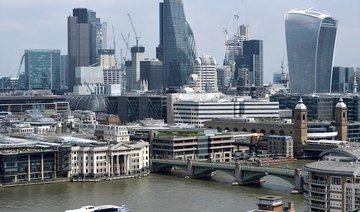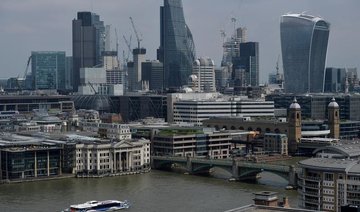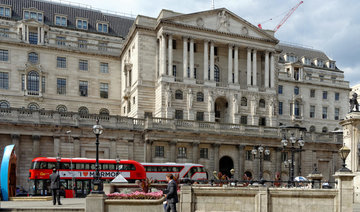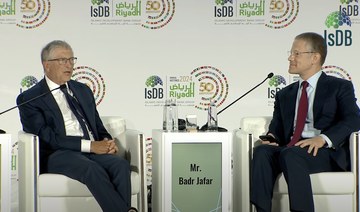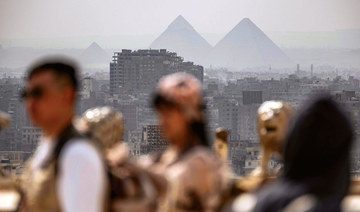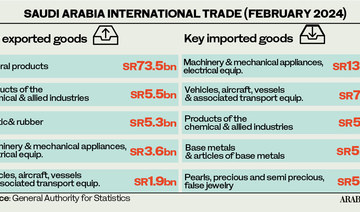LONDON: Will Britain’s decision to leave the EU in 2019 damage one of its most successful industries?
The financial services sector, which accounts for about 12 percent of Britain’s economic output and pays more tax than any other industry, potentially has a lot to lose from the end of unfettered access to the EU’s post-Brexit market of 440 million people.
Known for centuries as “the City,” London’s financial center has expanded beyond its original heartland in the City of London to the skyscrapers of Canary Wharf in the east and plush townhouses in Mayfair to the west. The British capital dominates global foreign exchange, and features international bond and fund management operations and more banks than any other hub.
But it is particularly vulnerable to a Brexit shock, because about a third of the transactions which take place on its exchanges and in its trading rooms involve clients in the EU.
This has led some politicians and economists to predict London will lose its pre-eminence as a financial center after Brexit, although supporters of leaving the EU say Britain will benefit over the long term by being able to set its own rules.
Reuters has created a tracker to monitor six indicators to help assess the fortunes of the City, taking a regular check on its pulse through public transport usage, bar and restaurant openings, commercial property prices and jobs.
“At the beginning it is difficult to assess the true impact of what is happening because it is quite a confused picture,” said Tom Kirchmaier, a professor who focuses on banking at the London School of Economics. “These proxies will help you piece together what is going on.”
Almost 17 months after Britons voted to leave the European Union, our indicators suggest signs of a slowdown, but no transformative decline.
Commercial property Reuters obtained property data from Savills and Knight Frank, two of the biggest real estate firms in Britain. Savills says it calculates the value of property based on all-known property deals within the City of London area. Knight Frank’s data comes from landlords, developers and agents.
According to Savills, commercial property prices in the City of London have dropped more since the Brexit vote in June 2016 than at any point since 2009, the last year of the global financial crisis.
The price of renting real estate in the City of London district has fallen by about 5 percent since last year, dropping to 73.4 pounds per square foot at the end of September, from 77.6 pounds, Savills says.
However, leasing activity in the City of London was 17 percent above the long term average in the first three quarters of 2017, Mat Oakley, Savills’ head of European commercial research, said.
In Canary Wharf, prices are unchanged compared with last year, Knight Frank says.
Oakley at Savills says that for the first time since the global financial crisis the finance and banking sector is “out there looking for new office space” in the former docklands.
Going Underground Every weekday more than 200,000 journeys are recorded at the two main underground stations — Bank and Monument — that serve the City, making the stations among London’s busiest.
To find the number of people using these two stations and the underground station at Canary Wharf, Reuters filed Freedom of Information Act requests to Transport for London, which runs public transport.
The number of people using Bank and Monument stations is on course for its first fall since the final year of the global financial crisis, Transport for London data shows.
Travelers going in and out of Bank and Monument fell by 2.7 percent in the first eight months of 2017 compared with 2016. This follows an annual increase each year since 2009.
In Canary Wharf, the number of people using the station continues to rise. But the pace has slowed and in the first seven months of this year grew at its second slowest since 2009, Transport for London data shows.
A spokesman for Transport for London said a multi-year project to expand the capacity at Bank station began at the end of 2015, resulting in the occasional closure of some escalators, but this has not resulted in any reduction in the number of trains running.
Reuters also filed a Freedom of Information Act request to the City of London Corporation to find the number of new premises who have applied for licenses to sell alcohol and license renewals this year.
So far, Brexit seems to be having no impact here. The number of venues, such as bars and restaurants, applying for new licenses to sell alcohol in the City of London in the first eight months of 2017 is at a record high, data from the municipal local authority that runs the district shows.
Officials at the City of London Corporation say this is partly because the area’s night life has diversified in recent years, and no longer just caters to finance workers.
“We have a safe City with an expanding night life,” the Corporation said in a statement.
London City Airport The number of people using London City Airport, favored by executives for flights to European cities and beyond, faces its slowest increase in five years, according to its publicly available passenger figures.
The airport, close to Canary Wharf’s financial district, had an increase of 0.9 percent in passengers in the first six months of this year. That compares with an average annual 10 percent increase in the previous four years.
London City Airport said that it has enjoyed record growth since 2012, but its capacity is being constrained at peak times and it is looking to expand.
Hiring numbers
The number of available jobs in London’s financial services industry this year has fallen the most in five years, recruitment agency Morgan McKinley says.
Morgan McKinley focuses on hiring staff in the finance industry. It says it bases its number on the overall volume of mandates it receives to find jobs; it then applies a multiplier based on its market share of London’s finance industry.
The recruiter found 51,922 new financial services jobs were created in the first seven months of this year, a 10 percent drop compared with the same period last year. This was the lowest number of jobs available since 2012.
“Businesses are naturally hesitant to plan and execute growth hires due to the uncertainty around Brexit,” said Hakan Enver, a director at Morgan McKinley.
Jobs leaving London? Around 10,000 finance jobs will be shifted out of Britain or created overseas in the next few years if the UK is denied access to Europe’s single market, according to a Reuters survey published in September of firms employing the bulk of workers in international finance.
Sam Woods, a deputy governor of the Bank of England who has reviewed the contingency plans of more than 400 banks and financial firms, said he agreed with the findings of the survey.
The findings suggest that the first wave of job losses from Brexit may be at the lower end of estimates by industry lobby groups and firms, which could mean London will keep its place as the continent’s top finance center, at least in the short term.
“Your survey seemed to be about right,” Woods said.
Brexit and the City: taking London’s financial pulse
Brexit and the City: taking London’s financial pulse
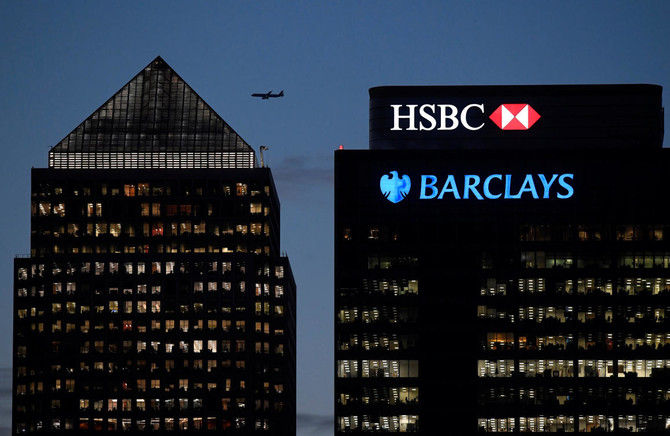
IsDB Group annual meetings conclude with 85 agreements worth over $8bn
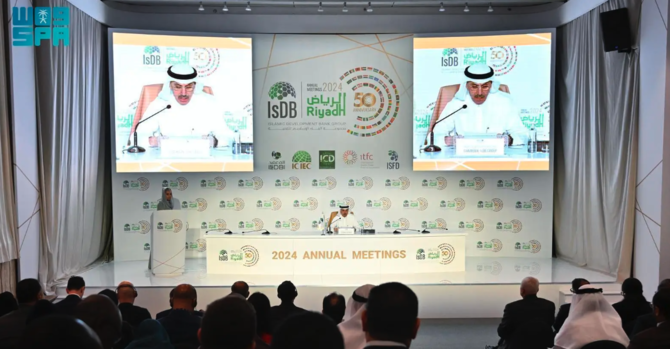
RIYADH: As many as 85 agreements worth over $8 billion were signed across diverse sectors during the recently concluded annual meetings of the Islamic Development Bank Group.
This stands in contrast to the last year’s meetings, which recorded only 77 financing agreements, totaling $5.4 billion.
Speaking at the concluding press briefing, IsDB Chairman Mohammed bin Sulaiman Al-Jasser disclosed the signing of financing agreements between the group's institutions, 38 member countries, and 22 international financial institutions, covering diverse projects.
He lauded the continuous backing of the group by Saudi leadership, citing it as a testament to the Kingdom’s commitment to global cooperation and advancement.
Highlighting the significance of this year’s gatherings, the chairman mentioned that they included meetings of the IsDB Group’s councils and over 27 consequential side events.
These sessions brought together distinguished intellectuals, experts, and researchers from various developmental domains, with a total of more than 3,750 participants.
Notably, representatives from approximately 55 international and regional partner organizations, including 23 institutional heads, were present.
Detailing the Private Sector Forum’s activities, Al-Jasser noted the participation of over 1,500 delegates from more than 60 nations. The forum, comprising 17 events, facilitated the signing of over 60 agreements amounting to approximately $6.5 billion.
Over the past 50 years, the IsDB has played a significant role in progress by funding developmental projects exceeding a total value of $182 billion, according to the chairman.
These projects have encompassed diverse vital areas, ranging from basic infrastructure and agriculture to various strategic sectors such as health, education and energy, as well as trade, and Islamic finance.
He emphasized that the discussions and exchanges during the meetings provided valuable insights and success stories crucial for fostering sustainable social and economic development. He affirmed that the outcomes would transform the IsDB’s future initiatives and strategic partnerships.
The issuance of the “Golden Jubilee Declaration” by the IsDB Board of Governors, acknowledging the bank’s pivotal role and achievements, was also highlighted by Al-Jasser.
The declaration outlined key future priorities, including enhancing governance, expanding concessional financing, and advancing Islamic finance and cooperation in Southern countries.
In conclusion, Al-Jasser reiterated the theme of the annual meetings – “Cherishing our Past, charting our Future: Originality, Solidarity and Prosperity” – underscoring its significance as a guiding principle for the IsDB’s trajectory.
He emphasized the organization’s commitment to drawing inspiration from past achievements, learning from historical lessons, and leveraging current challenges and opportunities to forge a brighter future.
Last year, the IsDB Group announced several projects with 24 member countries aimed at addressing pressing challenges hindering growth in the Global South, with a focus on health, agriculture, and food security, as well as initiatives targeting small and medium enterprises, education, and humanitarian assistance, among others.
Saudi’s Ma’aden completes 10% acquisition of Brazil’s Vale Base Metals

RIYADH: Saudi Arabian Mining Co., also known as Ma’aden, has announced that it has completed the 10 percent acquisition of Brazil’s Vale Base Metals.
Ma’aden, which is majority-owned by the Public Investment Fund, said that its joint venture, Manara Minerals Investment Co., finalized the purchase, according to a Tadawul statement.
This move will boost the growth of the Kingdom’s mining sector in line with the objectives of the Vision 2030 initiative to diversify the Saudi economy away from oil.
It follows Ma’aden’s announcement in July 2023 that its joint venture had signed a binding agreement to acquire the stake for $26 billion as part of a strategy to invest in global mining assets.
“This investment is an important milestone for Manara Minerals. Through our investment in VBM, we are increasing the supply of strategic minerals and enabling Saudi Arabia to play a growing role in the global energy transition supply chains,” Robert Wilt, executive director of Manara Minerals and CEO of Ma’aden, said at the time in a statement.
“Our proactive approach is a step further towards Saudi Vision 2030. It will support local industrial development, create jobs across the Kingdom, and strengthen the position of the mining sector as the third pillar of the economy,” Wilt added at the time.
Egypt’s net foreign assets deficit shrinks $17.8bn in March
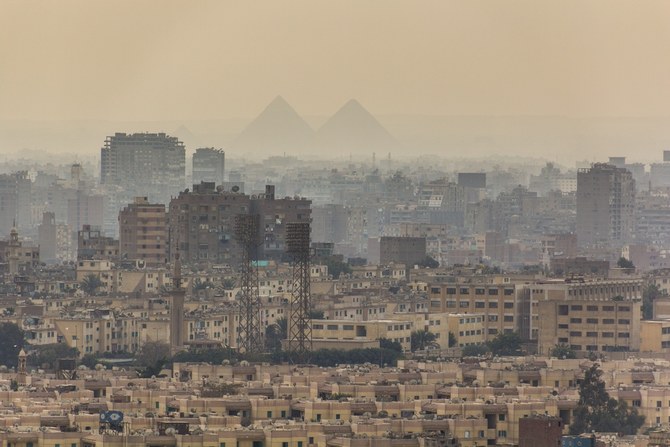
CAIRO: Egypt’s net foreign assets deficit shrank $17.8 billion in March, its second month of decline, central bank data showed, after remittances, foreign portfolio investment and a $5 billion payment from the UAE poured into the country, according to Reuters.
Egypt received a second $5 billion payment from the UAE in early March for a land development on the Mediterranean coast after an initial payment in February.
On March 6, it devalued its currency and announced an $8 billion agreement with the International Monetary Fund, triggering a flood of portfolio investments and remittances from workers abroad.
The March NFA deficit shrank to 200 billion Egyptian pounds ($4.18 billion) from 679 billion pounds in February.
The March NFA figures does not reflect an $820 million first instalment in early April under the expanded IMF financial support program.
Commercial banks’ foreign assets jumped by $7.4 billion in March while their liabilities slid by $3 billion, according to Reuters calculations based on central bank data and taking account of the March 6 devaluation.
Egypt has allowed its currency to weaken to 47.8 pounds to the dollar since it signed the IMF agreement after having left it fixed at 30.85 to the dollar for a year.
Central bank foreign assets rose by $3.5 billion while its foreign liabilities decreased by $3.9 billion.
NFAs represent both central bank and commercial bank assets held by non-residents, minus their liabilities.
The $17.4 billion reduction in the deficit followed a $7.04 billion reduction in February.
Before that, the central bank had been drawing on the NFAs over the past two and a half years to help support the country’s currency. In September 2021, NFAs stood at a positive $3.9 billion.
Oil Updates – prices fall for a 3rd day as Middle East ceasefire hopes rise
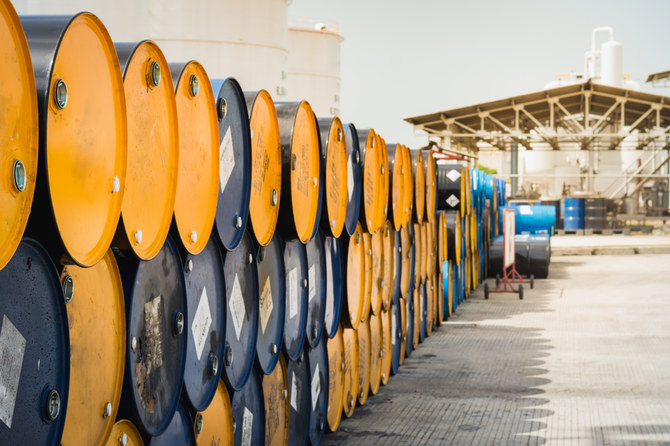
NEW YORK/SINGAPORE: Oil prices fell for a third day on Wednesday amid increasing hopes of a ceasefire agreement in the Middle East and rising crude inventories and production in the US, the world’s biggest oil consumer
Brent crude futures for July fell 70 cents, or 0.8 percent, to $85.63 a barrel by 7:56 a.m. Saudi time. US West Texas Intermediate crude for June declined 75 cents, or 0.9 percent, to $81.18 per barrel.
Expectations that a ceasefire agreement between Israel and Hamas could be in sight, following a renewed push led by Egypt to revive stalled negotiations between the two, pushed oil prices lower.
“The potential for a ceasefire agreement between Israel and Hamas has eased concerns of an escalation of the conflict and any possible disruptions to supply,” ANZ analysts said in a note on Wednesday.
However, Israeli Prime Minister Benjamin Netanyahu vowed on Tuesday to go ahead with a long-promised assault on the southern Gaza city of Rafah, whatever the response by Hamas to the latest proposals for a halt to the fighting and a return of Israeli hostages.
Also pressuring prices were swelling US crude oil inventories and rising crude supply.
US production rose to 13.15 million barrels per day in February from 12.58 million bpd in January, its biggest monthly increase in about 3-1/2 years, the Energy Information Administration said on Tuesday.
“Continued signs of inflation also raised concerns about demand for crude oil. This comes ahead of the US driving season, where demand for gasoline rises strongly,” analysts at ANZ said.
Keeping oil from slipping further, output by the Organization of the Petroleum Exporting Countries was seen falling by 100,000 bpd in April to 26.49 million bpd, a Reuters survey found on Tuesday.
The survey reflected lower exports from Iran, Iraq and Nigeria against a backdrop of ongoing voluntary supply cuts by some members agreed with the wider OPEC+ alliance.
Saudi Arabia’s real GDP rises by 1.3% in first quarter: GASTAT
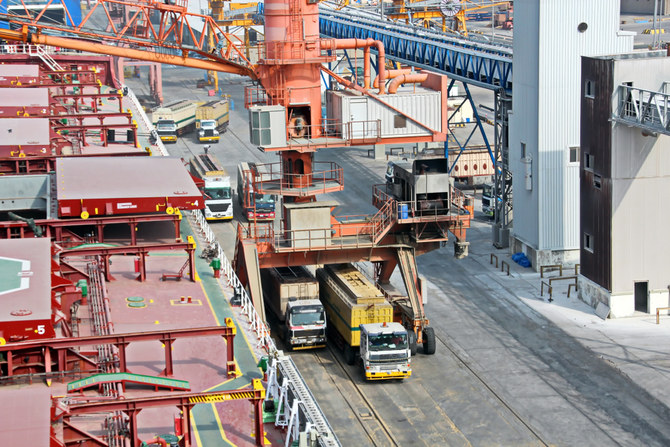
RIYADH: Saudi Arabia’s real gross domestic product saw a 1.3 percent rise in the first three months of this year compared to the previous quarter, official data showed.
According to the General Authority for Statistics, this rise in real GDP was propelled by oil and non-oil activities which increased by 2.4 percent and 0.5 percent during the period, respectively.
On the other hand, government activities in the Kingdom witnessed a decline of 1 percent in the first quarter of this year, compared to the last quarter of 2023.
However, GASTAT revealed that Saudi Arabia’s real GDP decreased by 1.8 percent in the first quarter of 2024 compared to the same period of the preceding year.
The authority attributed this decline to a drop in oil activities, which decreased by 10.8 percent year-on-year in the first quarter. The fall in oil exports stemmed from the Kingdom’s decision to curtail crude output, in line with an agreement by the Organization of the Petroleum Exporting Countries and its allies, collectively known as OPEC+.
In a bid to maintain market stability, Saudi Arabia decreased its oil output by 500,000 barrels per day in April 2023, a measure that has now been extended until December 2024.
Meanwhile, non-oil activities in the Kingdom witnessed a 2.8 percent year-on-year increase in the first quarter, with government activities experiencing a growth of 2 percent during the same period.
Strengthening the non-oil private sector is crucial for Saudi Arabia, as the Kingdom is steadily reducing its dependence on oil, aligned with the economic diversification efforts outlined in Vision 2030.
In March, another report released by GASTAT revealed that Saudi Arabia’s GDP decreased by 0.8 percent in 2023, compared to 2022.
On the other hand, the Kingdom’s non-oil activities demonstrated significant growth of 4.4 percent in 2023 compared to the previous year.
In 2023, the Kingdom’s government activities also witnessed a rise of 2.1 percent compared to 2022.
GASTAT releases International Trade report
On April 30, GASTAT also released its international trade report, which indicated that Saudi Arabia’s non-oil exports, including re-exports, declined 13.7 percent to SR272.37 billion ($72.62 billion) in 2023 compared to 2022.
The analysis revealed that the Kingdom’s overall merchandise exports also fell by 22.2 percent year-on-year in 2023 to SR1.2 trillion, driven by a 24.3 percent decrease in oil exports during the period.
Consequently, the percentage of oil exports out of total exports decreased to 77.3 percent in 2023 from 79.5 percent in 2022.
On the other hand, Saudi Arabia’s imports rose by 9 percent in 2023 to SR776 billion compared to the year-ago period.
The report also revealed that Saudi Arabia’s trade balance surplus stood at SR424 billion in 2023.
China was Saudi Arabia’s most important trading partner in 2023, with exports to the Asian nation amounting to SR199.3 billion or 16.6 percent of the total exports.
Japan and India closely followed China with $121.83 billion and 113.35 billion, respectively.
According to GASTAT, South Korea, the US, and the UAE, as well as Bahrain, Taiwan and Malaysia were the other countries that ranked in the top 10 destinations for Saudi Arabia’s exports.
On the other hand, imports from China to Saudi Arabia amounted to SR162.55 billion in 2023, followed by the US and the UAE with SR70.50 billion and SR50.05 billion, respectively.
India, Germany, and Japan, along with Switzerland, South Korea, and Italy, were the other countries that ranked in the top 10 countries for imports.
The report revealed that the Jeddah Islamic Port topped the list of terminals through which goods reached the Kingdom in 2023 at a value of SR227.38 billion, corresponding to 29.3 percent of the total imports.


